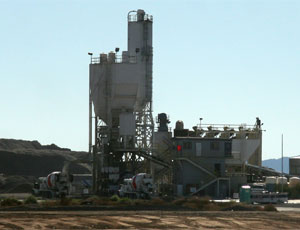One of the most noticeable absences at the World of Concrete trade show in Las Vegas earlier this month was Cemex — the third largest cement producer and largest in North America. In fact, the only trace of the Monterrey, Mexico-based firm this year was a truck on display in the Peterbilt exhibit painted with the company’s distinctive red, white and blue design.


Instead, Cemex held a series of meetings on Feb. 4 at its headquarters in Monterrey dubbed Cemex Day to outline the company’s financial situation and unveil its plans to weather the financial storm. The assessment by Cemex’s Chief Executive Officer Lorenzo H. Zambrano was understated but very much to the point.
“These are not the nicest times,” he said.
While the current economic downturn has been difficult for the cement industry as a whole, Cemex has been hit unusually hard due to its particular financial situation. The company is struggling with a massive debt load due in large part to the $14.2 billion purchase of Australian cement maker Rinker Group Ltd. in 2007.
“We knew we were in a down cycle when we purchased Rinker,” said Chief Financial Officer Rodrigo Trevi�o. “But nobody anticipated the magnitude of the downturn we have seen.”
The company projects its operating cash flow will decline 19 percent in 2009 to about $2 billion due to the ongoing economic malaise globally. Cemex says it expects concrete demand in North America to fall more than 15 percent this year.
To weather the downturn, Cemex underwent a dramatic $700-million cost-cutting effort last year that included laying off 11%of its workforce and shuttering hundreds of plants internationally. It also prompted the slashing of travel and expense budgets that precluded any appearance at World of Concrete.
The belt-tightening is expected to continue as more cuts are planned for 2009, said Juan Pablo San Agust�n, the company’s senior vice president of corporate strategic planning.
“You have to make judgment calls on what you need to do,” Zambrano said. “You have to be objective and detached when you make these decisions.”
During the Feb. 4 meetings, Cemex announced plans to reduce its debt load by $3.6 billion this year — partially in anticipation of refinancing approximately $3 billion in debt next year due to the Rinker purchase.
To raise the funds the company is planning to sell between $1.7 between and $1.9 billion in assets this year not counting completed transactions pending approval by regulatory agencies in Austria, Hungary and the Canary Islands. While the market for buyers is still limited, the situation is vastly improved over just six months ago, Agust�n said.
“Our focus is to reduce debt and so we want cash,” he said. “No swaps. Only sells.”
The one silver lining in the projections is they do not include any possible effect to the construction industry due to the various stimulus packages currently being considered by the US and other countries.
“Any benefit out of any stimulus package will be on top of what we have already projected for this year,” Augustine said.
Despite the dour tone of the financial situation Zambrano was upbeat about the future insisting that construction is likely to be one of the first industries to recover if economic conditions improve.
“We will be well positioned when the market recovers going forward,” said Gilberto Perez, President of Cemex USA.



Post a comment to this article
Report Abusive Comment